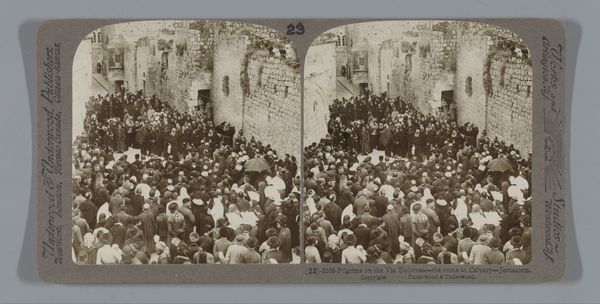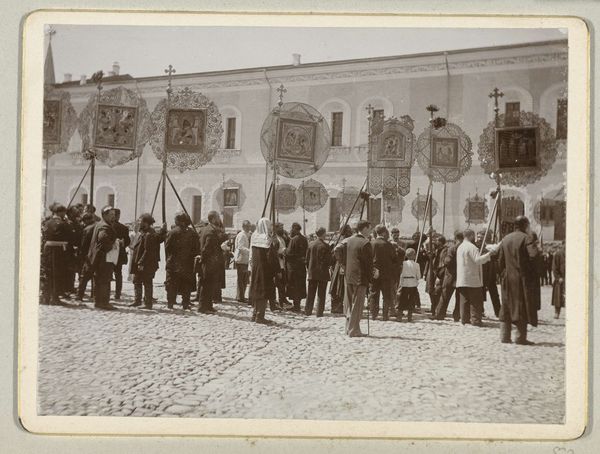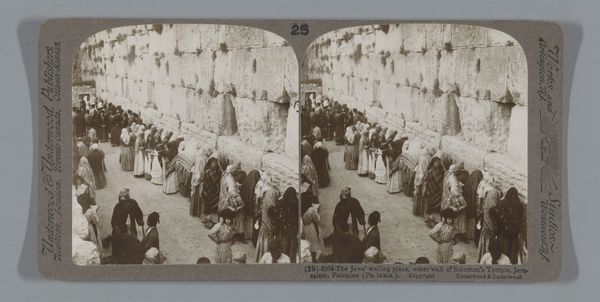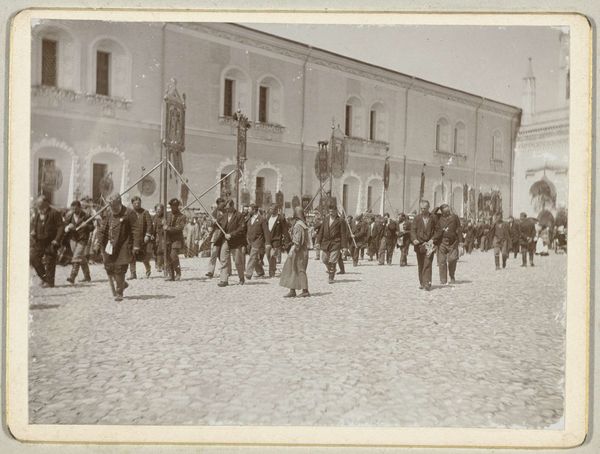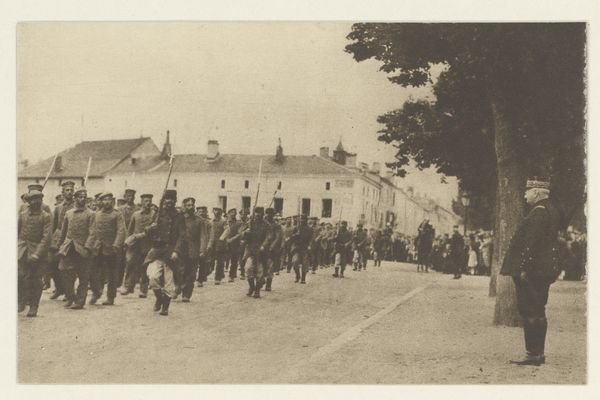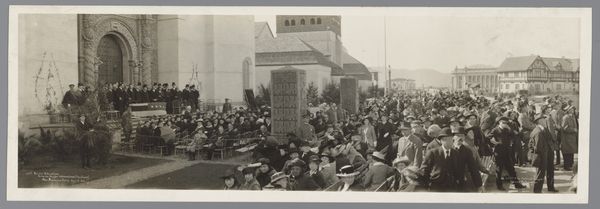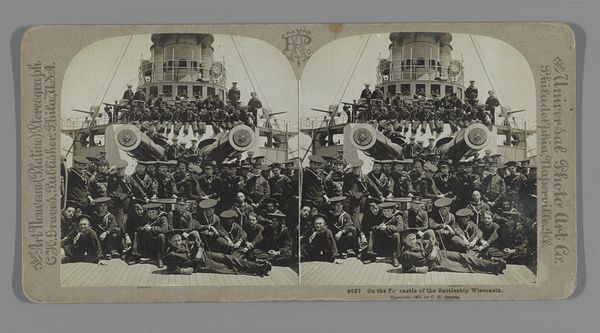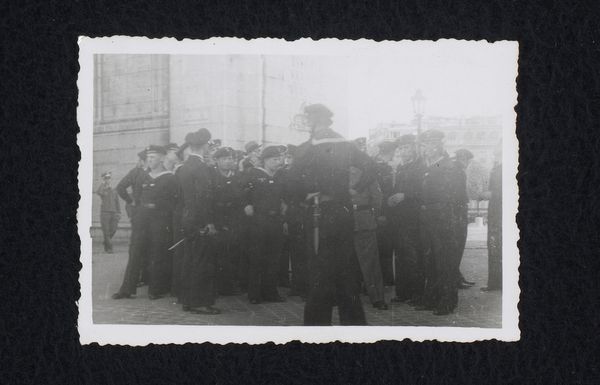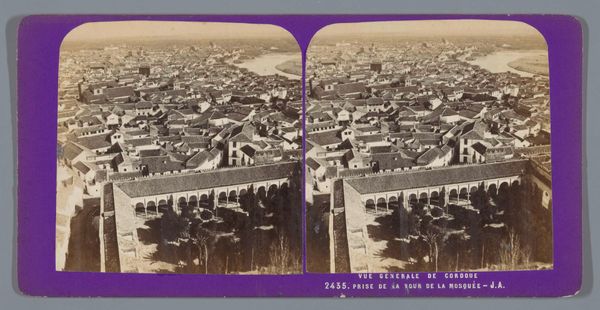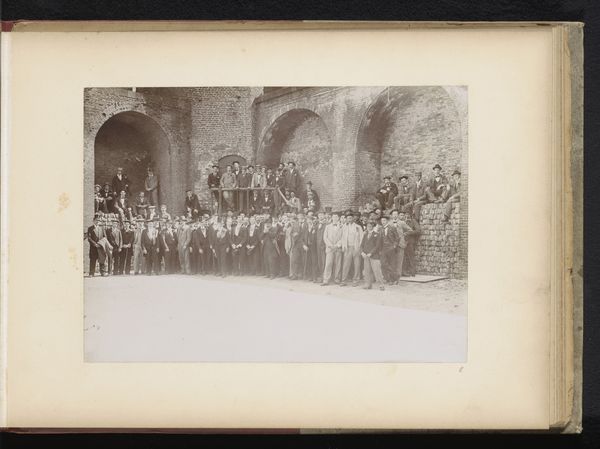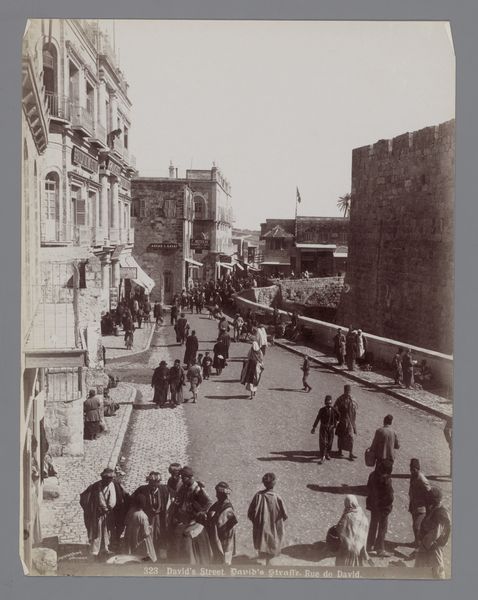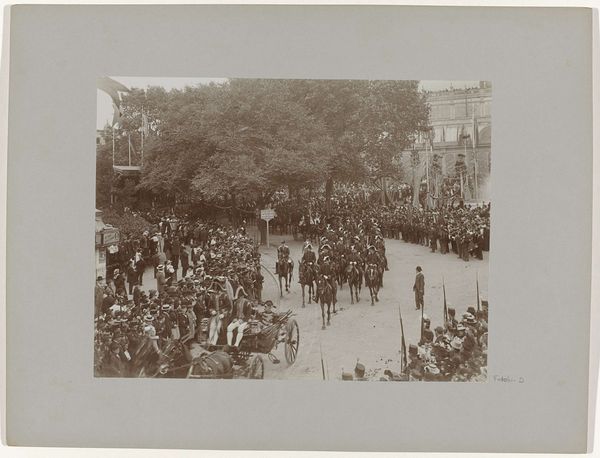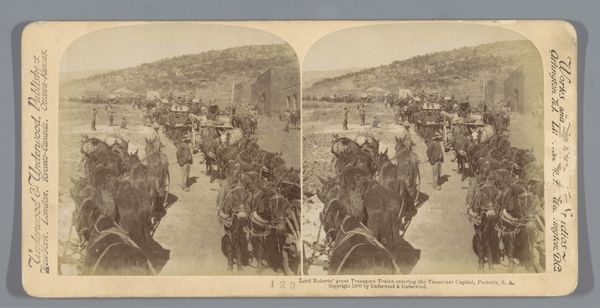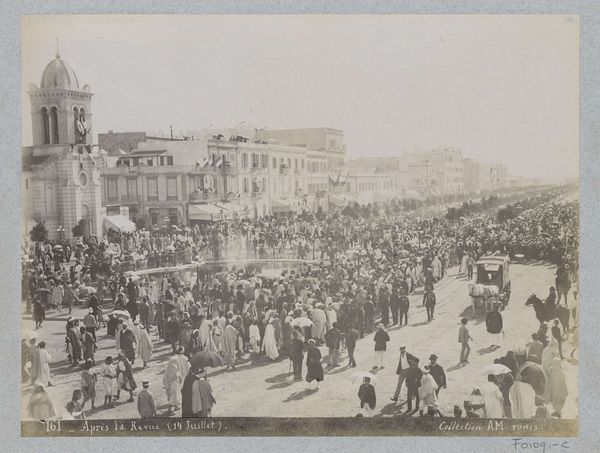
Paasprocessie van de Griekse patriarch voor de Heilige Grafkerk, Jeruzalem 1900 - 1905
0:00
0:00
print, photography, photomontage
# print
#
photography
#
photomontage
#
orientalism
#
genre-painting
#
realism
Dimensions: height 88 mm, width 177 mm
Copyright: Rijks Museum: Open Domain
Curator: This image, titled "Paasprocessie van de Griekse patriarch voor de Heilige Grafkerk, Jeruzalem" and dating from 1900 to 1905, offers us a compelling glimpse into a specific cultural and historical moment. Editor: It's fascinating to see this massive crowd gathered, all wearing similar hats, within such a historic setting. It feels very… ordered, yet also teeming with humanity. What do you see in this piece, particularly considering its age? Curator: I see a complex representation of power, faith, and the gaze of the West upon the East. This photograph, presented as a stereo view for Western consumption, visualizes the "Orient" at a specific time. The very act of capturing this procession becomes a form of appropriation, framing a religious practice within a colonial context. Think about who is taking the photo and for what audience. Do you consider that plays into the image's intent? Editor: I see what you mean. It’s not just a neutral recording; the photographer's perspective is crucial. So the framing, the selection of this moment… it all speaks to a certain narrative. Curator: Exactly. And it's essential to examine the representation of the Greek Patriarch and the faithful. Is this meant to inform, or does it reinforce existing stereotypes and power dynamics of the time? Are they presented as 'other'? The repetitive nature of their attire, their placement within a contained architectural space—what does that suggest? Editor: That's a great point about the clothing. The repetition of the dark hats definitely creates a sense of uniformity. I guess, looking at it again, it makes me wonder about individuality versus collectivity. Curator: And whose perspective truly matters in that depiction? Thinking critically about whose story is being told, and for whom, is key. This image acts as both a historical record and a site of potential misrepresentation, urging us to engage with it in a conscious, questioning manner. Editor: I’ve learned a lot from your perspective and I'll definitely consider these critical aspects from now on when approaching historical artworks. Curator: That's fantastic. Art is such a powerful instrument and always relevant if approached thoughtfully.
Comments
No comments
Be the first to comment and join the conversation on the ultimate creative platform.
